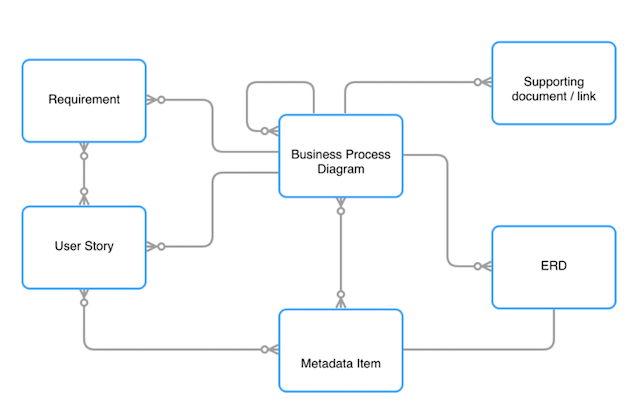Process maps are a valuable way to identify waste and streamline operations. This is especially important as every organization has accelerated their digital transformation efforts. In the first few months when COVID-19 drove every customer online, they were happy with a patchy digital experience. The first organizations to get a service up and running gained massively as there was limited competition. But a year on, most organizations have some online service so customers are now able to be selective. They are choosing organizations that have a great online experience. What does that mean? Expectation and execution. The promise of the website is delivered by the back office.
I recently was shopping for a 4×4 cargo van to convert to an RV. There were 2 options; Mercedes and Ford. I wrote a recent blog about the dramatically different digital buying experiences. They both have elegant configurators on their websites, so I went in very informed on the options I wanted and the final cost. In the dealership they reenter the configuration into their build system. Mercedes price was 27% higher when configured because the website had 2020 prices and didn’t add the “market adjustment” that some dealers add. It felt like a “bait and switch”. Ford’s price in the dealership was identical to the website price. We ordered a Ford.
Product and price visibility on the company websites means customers are better informed when they walk in to make a major purchase. The transparent mismatch between the online price and final purchase price exposes sales tactics, kills trust and the deal.
Business change often drives a software application change
As the Mercedes/Ford example shows, every organization is a “software company”. In 2011, Marc Andreesen penned a WSJ piece called “software is eating the world”. Philips doesn’t make light bulbs. Their LED bulbs last 20 years. So instead they’ve evolved into selling digital lighting solutions. Tesla has shown that cars are now just software on wheels. Every organization relies on a myriad of internal software applications to deliver the complete customer experience. Software does run the world.
So what has this got to do with process maps? Business process maps are really valuable as a way of getting everybody on the same page (literally). They allow everyone to truly understand the details and nuances of a business process, the handoffs, the data flow, and the error handling. In a recent BPMI article called “Which hat are you wearing”, where I talked about these different stakeholders, one of which is IT.
The business process maps are part of the specifications for changes to systems applications. On their own they have some value, but become even more valuable when they are connected to the other assets used to implement systems changes. Information silos kills implementation speed and increases risk for misunderstanding.
You wouldn’t manage Accounts in a spreadsheet, Contacts in a different spreadsheet, Opportunities in project management app, and then all correspondence notes in email. You use a CRM because the value is in the relationships.
Joined up thinking
Here is an Entity Relationship Diagram (ERD), or data model, describing the relationships between the process map and other analysis documentation:

Requirements: Normally changes to an existing app or suggestions for a new app start as a set of requirements or end user feedback. These will be different levels of detail, accuracy and relevance. They need to be validated, triaged, and prioritized in a central database. The easiest way to validate them is to map the business process and link the requirements to the business process activity or step. The act of mapping will also identify new requirements that hadn’t been considered. Requirements should be managed through a formal lifecycle, so it is possible to see if there is an impact of constant change or conflicts on the business operations; i.e. several requirements being delivered in different releases with changes to the same area of the business.
User Stories: User stories are the technical specifications that are passed to the development team. Links to the business processes and visibility of the related requirements and ERD give valuable context for the developers. Context reduces ambiguity and therefore the risk of making the wrong changes. This means less rework and faster development. It is easier for developers to have a discussion about change in the business process to simplify the implementation. The changes are documented in the shared repository.
ERD: Link the key data objects impacted by the business processes. Not all the data will be in one system, as business processes normally span many systems. The business process will highlight the data handoffs and therefore the integrations between apps. As business processes also have links to requirements and user stories, it is possible to see the roadmap of changes required to the data model and integrations. This could highlight constraints, risks or issues.
Application metadata/configuration: Not every metadata item needs to be linked to a process step, but the key ones that have been configured to support the process does. At a minimum, the objects and any flows. A number of process steps may use the same metadata items so you can see the reuse and implications on changing them.
Documentation: This could be notes from mapping workshops, screenshots, training content, specifications or simply a link to the application in the correct place. The trick is making sure each person sees only what is relevant to them. End users want training material in their language, but don’t need to see configuration change specifications.
Process driven insights
This joined up approach helps answer 2 questions which help the business drive faster and lower risk changes:
– If I change this business process, which systems are impacted?
– If I change this system, which processes are affected?
A process mapping application needs to be able to play nicely with the applications that manage these other entities; requirements, user stories, and application metadata. Process maps are valuable assets that need to be managed as carefully as customer data.

















